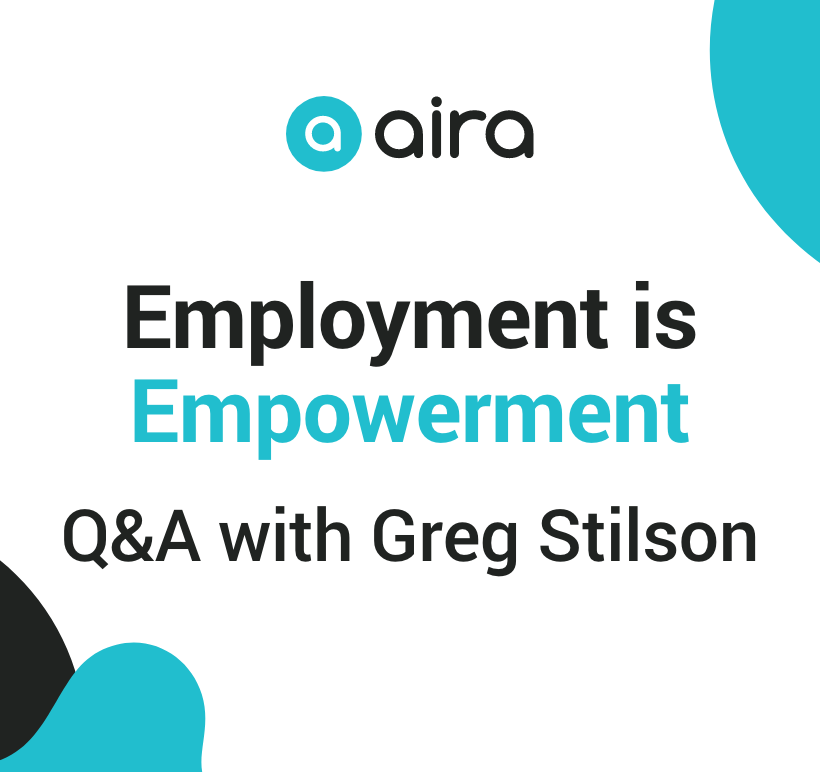It’s no secret that blind and low vision individuals face heightened barriers when it comes to securing workplace opportunities and advancement. Join us in celebrating National Disability Employment Awareness Month as we spotlight individuals who overcome these barriers through assistive technologies like Aira.
We sat down with avid technologist, experienced product manager, and busy father of two, Greg Stilson, to learn more about his experience using Aira in his work as the Head of Global Innovation at American Printing House for the Blind.
How did you hear about Aira and when did you first start using it?
I started using Aira pretty much when they first came on the scene in 2017. At the time, I was working for a company and traveling pretty extensively, and one of the biggest challenges that I face as a blind person traveling is navigating the unreliability of airports. I saw that this option was available and found it really reliable. It just gave me this sense of independence and I got really hooked after that.
Where do you work and what does your day to day entail?
I run the global technology innovation team at the American Printing House for the Blind (APH), one of the largest nonprofits that supports the learning and education of blind students in the K-12 system. Our team consists of technology product managers, quality assurance analysts, and software engineers, and we design technology products for students in the classroom.
How does Aira assist you in your work?
So APH purchased Aira as an accommodation for their blind employees as sort of a perk of the job, and I use Aira for accomplishing day-to-day tasks. For example, I’ll use it to validate the alignment of PowerPoint slides, making sure I’ve put images and pictures in the right spot and they aren’t covering text and things like that. It’s been a really valuable tool.
What can other organizations learn from APH’s accessibility measures?
APH generally has an inclusive thought process and it’s a big reason why I work there – the fact that they take the needs of an individual seriously and ask themselves, “How can we optimize our employees to do the best job that they can?” I want other organizations to challenge their preconceived notions that a blind person couldn’t do this job, and to try changing their mindset to ask, “What can I add to their toolbox to allow them to do their job?” Blind and low vision employees are one of the more widely untapped resources in the workforce market, and a shift in mindset can help you optimize this resource.
What’s the biggest misconception you encounter with accessibility most often?
There’s this misconception that – we can work toward accessibility later. It becomes tomorrow’s problem, but the reality is that waiting to address it makes it way more costly. It puts your company at risk for other issues, and you’re limiting your workforce if you don’t make something accessible from the ground up or early on. You can really get the most bang for your buck right away if you set up your systems and processes with accommodations right up front.
What’s one thing you wish people knew about accessibility?
Accessibility is not just related to folks who are blind or low vision. It goes all the way to somebody who’s in a wheelchair, somebody who has cognitive load issues, somebody who has limited use of their limbs or extremities. That’s where accommodations come into play – making sure that you’re opening up your process, your system, or your organization to people who have different needs that you may not have thought about.
How would you describe the benefit of Aira to other people?
Aira provides additional independence on your terms. As a blind person, we’re told to hurry up and wait a lot. Not being told to wait and being able to do what I want, when I want – it’s just a massive mind shift and it’s quite freeing. It’s another tool in your toolbox that can optimize your independence.
